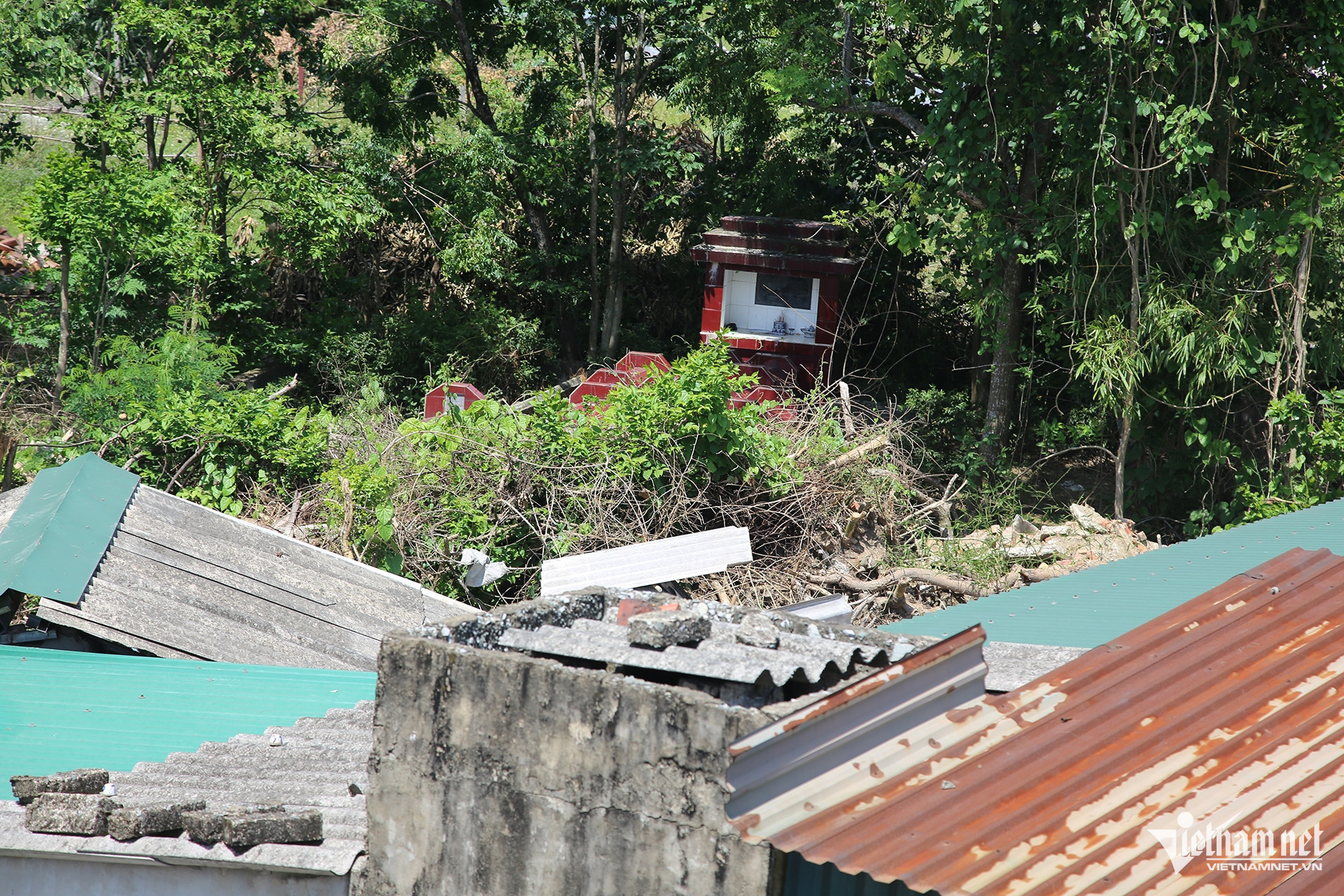
Tran Duy Dong (born 1965) and Nguyen Thi Hong (born 1970), residing in Hung Loc Ward, Vinh City (Nghe An), were shocked to learn that converting their 300 sq m garden land plot, located near a village cemetery, to residential land would require a tax payment of nearly VND4.5 billion.
Hong said her family has been using this land since before 1993 and granted a land use right certificate. Her family has 3 children (2 boys, 1 girl). Recently, her husband suffered from a serious illness, so he wants to transfer and divide the land into 3 plots for his 3 children before he dies.
Their land covers an area of 300 sq m, but only 150 sq m are recognized as residential land. One of their children built a house on the 150 sq m and lived there, and they wanted to convert the remaining land, 150 sq m, from garden to residential land to transfer to the other children.
Hong estimated that she would have to pay VND1.9 million per sq m in tax to convert the land into residential land, and borrow VND600 million from banks to pay the tax.
However, on June 23, when her daughter visited local authorities, she was informed that her family has to pay VND4.5 billion in tax, or VND15 million per sq m.
“My daughter burst into tears as she did not know how she could get this amount of money to pay tax,” Hong told VietNamNet.
Hong is not alone. In Nghe An Newspaper, the Vinh City People’s Committee Office and the Public Administration Service Center reported that in June, when a family of three siblings in Hung Hoa Commune (Vinh City) with land allocated before 1980, wanted to re-purpose its housing land, they were told to pay VND11 billion per new regulations, instead of VND1.4 billion as stipulated by old regulations.
Nghe An’s Department of Agriculture and Environment informed them that the new Land Law abolished the land price framework, replacing it with a market-based price list.
However, the mechanism for converting land-use purposes under the new law still has shortcomings, and charging households land-use fees as applied to commercial projects is unreasonable.
Lawyer Nguyen Van Dinh (Hanoi Bar Association) said the 2024 Land Law’s spirit is eliminating the “land price framework” scheme and adopting market-based prices to increase state revenue and provide fairer compensation for land acquisition.
However, he pointed out that higher land prices lead to increased costs for citizens, such as taxes on land-use right transfers and registration fees.
Recently, some localities have adjusted land price lists to levels multiple times higher than before, causing conversion costs to skyrocket.
The lawyer pointed out two significant problems. First, under Decree 45/2014, households converting garden or pond land (within the same land plot with houses) to residential land had to pay only 50 percent of the difference between residential and agricultural land prices.
However, the 2024 Land Law no longer specified “garden or pond land within the same land plot with houses” but referred to it as “agricultural land within the same plot with houses.” Under Decree 103/2024, when converting agricultural land to residential land, people must pay 100 percent of the difference, meaning the collection rate doubled compared to previous regulations.
Second, with new land prices in many areas significantly increasing, the gap between residential and agricultural land prices has widened, directly impacting people’s livelihoods.
Distinguishing genuine need from speculation
To solve this problem, the Ministry of Finance, which is responsible for drafting decrees on land-use and lease fees, has requested localities to report on calculating land-use fees for households re-purposing land use.
In a draft amendment, the Ministry proposed adding Clause 6 to Article 52 of Decree 103/2024, restoring the old rule: collecting only 50 percent of the price difference between residential and agricultural land when converting garden or pond land within the same land plot with houses.
However, Dinh believes this only partially addresses the issue, as the sharp rise in land price lists remains unresolved. He noted that the Land Law tries to address too many objectives through land pricing.
Particularly, the expansion of land price list application creates instability in law enforcement. When people have their land taken back by the state to serve project development, they expect high prices to get high compensation. But when changing the purpose of use, they expect low prices to reduce costs.
Hong Khanh